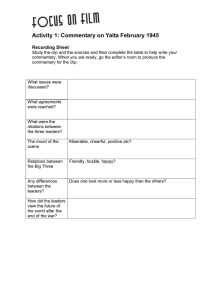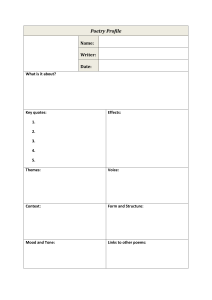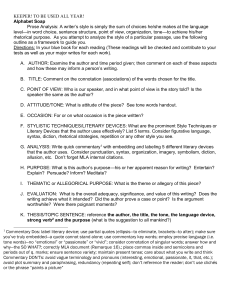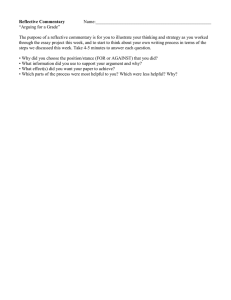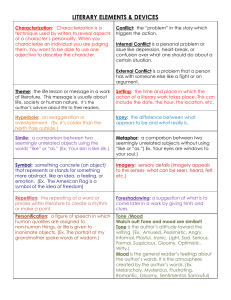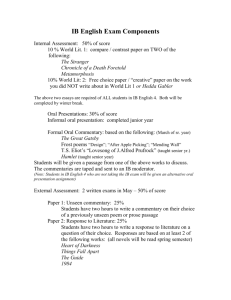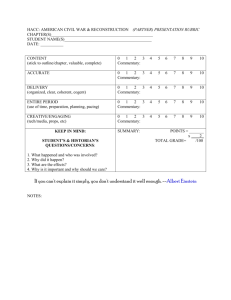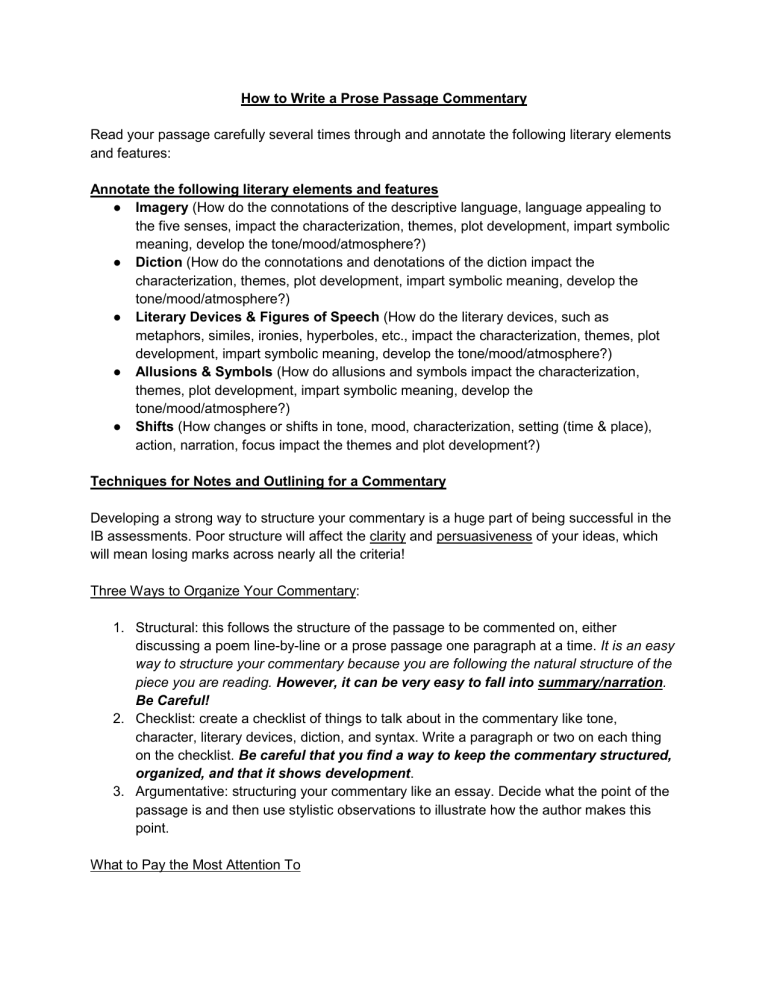
How to Write a Prose Passage Commentary Read your passage carefully several times through and annotate the following literary elements and features: Annotate the following literary elements and features ● Imagery (How do the connotations of the descriptive language, language appealing to the five senses, impact the characterization, themes, plot development, impart symbolic meaning, develop the tone/mood/atmosphere?) ● Diction (How do the connotations and denotations of the diction impact the characterization, themes, plot development, impart symbolic meaning, develop the tone/mood/atmosphere?) ● Literary Devices & Figures of Speech (How do the literary devices, such as metaphors, similes, ironies, hyperboles, etc., impact the characterization, themes, plot development, impart symbolic meaning, develop the tone/mood/atmosphere?) ● Allusions & Symbols (How do allusions and symbols impact the characterization, themes, plot development, impart symbolic meaning, develop the tone/mood/atmosphere?) ● Shifts (How changes or shifts in tone, mood, characterization, setting (time & place), action, narration, focus impact the themes and plot development?) Techniques for Notes and Outlining for a Commentary Developing a strong way to structure your commentary is a huge part of being successful in the IB assessments. Poor structure will affect the clarity and persuasiveness of your ideas, which will mean losing marks across nearly all the criteria! Three Ways to Organize Your Commentary: 1. Structural: this follows the structure of the passage to be commented on, either discussing a poem line-by-line or a prose passage one paragraph at a time. It is an easy way to structure your commentary because you are following the natural structure of the piece you are reading. However, it can be very easy to fall into summary/narration. Be Careful! 2. Checklist: create a checklist of things to talk about in the commentary like tone, character, literary devices, diction, and syntax. Write a paragraph or two on each thing on the checklist. Be careful that you find a way to keep the commentary structured, organized, and that it shows development. 3. Argumentative: structuring your commentary like an essay. Decide what the point of the passage is and then use stylistic observations to illustrate how the author makes this point. What to Pay the Most Attention To 1. Language and style: 10 points, a quarter of your entire grade for this assessment is based on your ability to describe how different figures of language work to achieve an overall effect. You must learn to be precise in the language that you use and to discuss language and style in the passage. a. Stay in the middle: you can go wrong with language and style in two ways-vagueness and over-complication. Make sure you know exactly what each word you’re using means, and think carefully about whether you’re applying in in the right context. 2. Introductions and conclusions: How much you write in an introduction is up to you. It can be short and direct or sound more like the introductory paragraph of an essay. Make sure you transition smoothly into the main body of your commentary. Conclusions are also important, to wrap up any major points that you are trying to make, but be careful about being redundant. 3. Structure: This is incredibly important--your commentary needs to flow logically. If it jumps around and feels like you are mentioning things as they come to mind, the organization criterion will not receive good marks. 4. Timing: Plan it out! You don’t get a grade for your outline and notes, but it’s worth making sure you have a solid plan in place. I recommend spending 30 minutes or so just planning it out.
